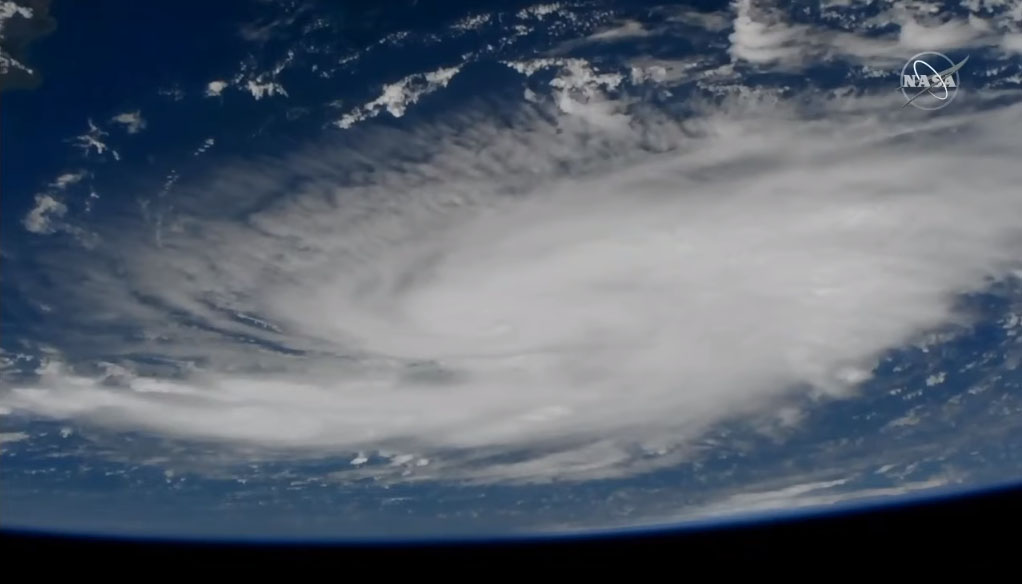NASA Sees Hurricane Dorian from Space Station (Video)
NASA is keeping a close watch on Hurricane Dorian as it barrels across the Atlantic Ocean on its way toward Florida, and now the agency has spotted in the storm from the International Space Station.
A video of Hurricane Dorian captured today (Aug. 29) from the space station shows the Category 1 storm as it appeared at 1:05 p.m. EDT (1705 GMT). At the time, the storm was north of Puerto Rico and moving north across the Atlantic Ocean. The space station, meanwhile, was flying 260 miles (418 kilometers) above Cuba.
Dorian currently has wind speeds of near 85 mph (140 km/h) and is forecast to strengthen into a major hurricane by Friday (Aug. 30), according to the National Hurricane Center (NHC).
Related: Most Powerful Storms of the Solar System in Photos
"A west-northwestward motion is forecast to begin by Friday night and continue into the weekend," NHC officials said in an update. "On this track, Dorian should move over the Atlantic well east of the southeastern and central Bahamas today and on Friday, approach the northwestern Bahamas Saturday, and move near or over portions of the northwest Bahamas on Sunday."
Officials at NASA's Kennedy Space Center in Cape Canaveral, Florida are preparing for the the storm, just in case it makes landfall near the spaceport on Sunday (Sept. 1). Center officials are moving a 400-foot-tall (122 meters) Mobile Launcher tower into the Vehicle Assembly Building, a 52-story building once used to prepare NASA's Saturn V moon rockets and space shuttles for flight.
The many Earth-facing video cameras on the International Space Station are part of a fleet of space-based views NASA and the National Oceanic and Atmospheric Administration (NOAA) are using to track Dorian from orbit. Both agencies are also using the GOES-East satellite, the Suomi NPP Earth-watching satellite and others to monitor the storm.
Breaking space news, the latest updates on rocket launches, skywatching events and more!
- Hurricane Florence Is a 'No-Kidding Nightmare' in These New Astronaut Photos
- Huge Hurricane Florence Looms Large in New Views from Space (Video)
- Hurricane Florence Looks Like a Giant Cotton Ball in This Astronaut Photo from Space
Email Tariq Malik at tmalik@space.com or follow him @tariqjmalik. Follow us on Twitter @Spacedotcom and on Facebook.

Tariq is the award-winning Editor-in-Chief of Space.com and joined the team in 2001. He covers human spaceflight, as well as skywatching and entertainment. He became Space.com's Editor-in-Chief in 2019. Before joining Space.com, Tariq was a staff reporter for The Los Angeles Times covering education and city beats in La Habra, Fullerton and Huntington Beach. He's a recipient of the 2022 Harry Kolcum Award for excellence in space reporting and the 2025 Space Pioneer Award from the National Space Society. He is an Eagle Scout and Space Camp alum with journalism degrees from the USC and NYU. You can find Tariq at Space.com and as the co-host to the This Week In Space podcast on the TWiT network. To see his latest project, you can follow Tariq on Twitter @tariqjmalik.

